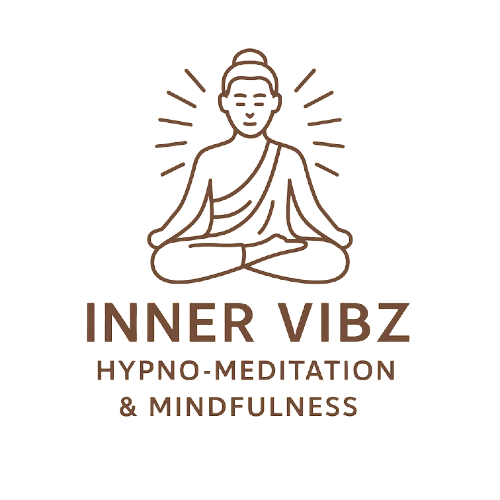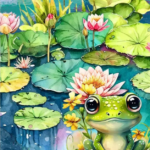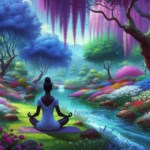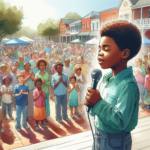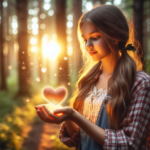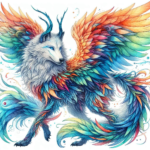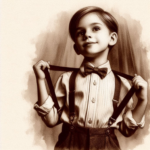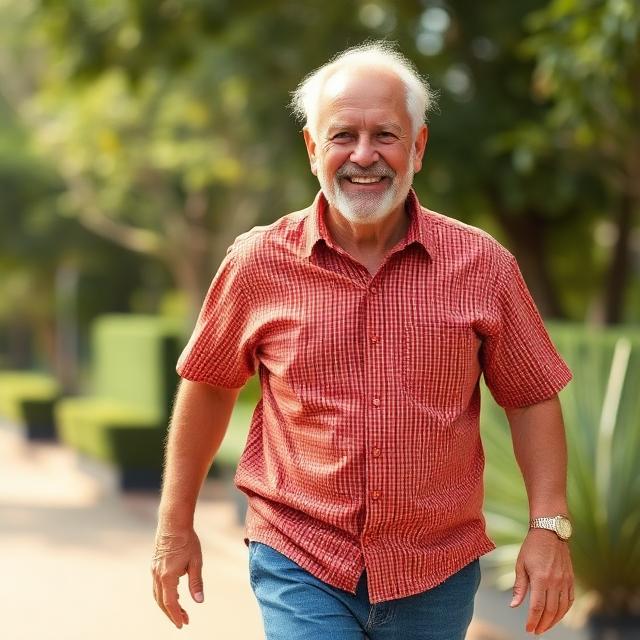And her extraordinary connection to the past:
Amara was just six years old when she first felt the music calling to her. It was a quiet tug, pulling her toward melodies that seemed to whisper secrets only she could understand. Her parents were perplexed when she spun gracefully around their living room, her tiny feet gliding as if guided by an unseen force. She danced not like a child in playful abandon, but with the elegance of someone far older.
“Where did you learn that, sweetheart?” her mother asked, watching in amazement.
Amara shrugged, “I think I just remember it.”
These feelings grew stronger as she got older. Whenever she heard music, her heart would race, and images would flood her mind—flashes of glittering ballrooms, a cascade of movement under golden chandeliers, the rustle of silk skirts. She saw herself there, dancing, though it was not the Amara she knew. It was someone older, wearing a deep-red gown, her auburn hair pinned up, her feet moving in rhythm to songs long forgotten.
At night, her dreams would transport her back to this world. She could feel the heavy fabric of her dress, the smooth surface of the dance floor, and the eyes of an audience watching her every move. She twirled with partners whose faces blurred in her memory but whose presence felt achingly familiar.
Amara couldn’t keep the visions to herself forever. One day, as she sat on the porch swing, her grandmother asked, “Why do you love to dance so much, dear?”
“Because I used to,” Amara said simply. “I mean, before I was me.”
Her grandmother’s eyes widened but softened with understanding. “You mean…you remember?”
Amara nodded. “I was a dancer. A real one. People clapped for me, and I could feel their happiness in my chest. But there was sadness too…I don’t know why.”
Her grandmother leaned in and whispered, “Some say old souls find their way back, carrying bits of who they were. Maybe that’s why you’re so gifted.”
Encouraged by this, Amara begged her parents for ballet lessons. From the moment she stepped onto the studio floor, she moved as if she had been dancing her entire life—or lives. Her teachers marveled at her natural grace, claiming she had the spirit of a performer.
Still, Amara couldn’t shake the feeling of sadness tied to her memories. One day, while practicing alone, she recalled the finale of a dance in her past life—a moment so vivid it made her gasp. She remembered bowing to thunderous applause, but her heart ached. She had danced not for joy, but for approval, yearning for acceptance she never truly received.
That realization unlocked something in Amara. She vowed to dance not for the admiration of others, but for the love of movement itself. And as she embraced her gift with this new purpose, the heaviness of her memories began to lift, replaced by an unshakable joy.
Amara would grow up to be a celebrated dancer, but to those who watched her perform, her secret stayed hidden. No one knew the young women on stage wasn’t just dancing in the present—she was honoring the steps of her past, moving forward in a life that belonged fully to her.
